Beginner Lawn Care Tricks
- February 29, 2024
- 0 comment
Welcome to your ultimate guide on how to thicken up your lawn, transforming it into the lush, green oasis you’ve always dreamed of. Embarking on this journey, we will delve into the essential steps and techniques needed to invigorate your lawn, ensuring that every blade of grass contributes to a denser, more vibrant turf. From the initial assessment of your lawn’s current state to the detailed processes of aeration, seeding, and ongoing care, this guide is designed to equip you with the knowledge and confidence to achieve a healthier, thicker lawn that stands as a testament to your dedication and love for your outdoor space.

List of Lawn Care Tricks
- Assessing Your Lawn’s Health
- Aeration: Let Your Lawn Breathe
- The Magic of Scarification
- Post-Scarification Care
- Soil and Seeding: Laying the Foundation
- The Final Touches: Luting and Seaweed Application
The Journey Begins: Initial Steps
The initiation of a fruitful lawn renovation journey hinges on mastering the fundamental step of grass cutting, a task that might appear counterproductive at first glance. A meticulously executed trim, shorter than the usual, sets the stage for subsequent lawn treatments by removing old growth and promoting healthier, denser regrowth. This process, however, doesn’t advocate for extreme cutting down to the roots, but rather emphasizes the importance of striking an optimal balance. Identifying this “sweet spot” in grass length is crucial, as it ensures the lawn is not stressed by overcutting, yet is primed and ready to absorb nutrients, water, and air more effectively, laying down the perfect groundwork for a thriving, rejuvenated lawn.
Assessing Your Lawn’s Health
Let’s take a moment to really look at your lawn and understand what’s going on with it. Assessing the health of your lawn is like playing detective with the grass. You see, a lush lawn is more than just the vibrant green you admire from your window; it’s about the unseen world beneath your feet. A bit of thatch, that layer of dead grass and roots, can be good, acting like a mulch to protect the soil.

But when it gets too thick, it’s like putting a blanket over your lawn that suffocates it. And oh, if you spot worms wriggling around, give yourself a pat on the back because it means your soil is alive and kicking, well-aerated, and fertile.
Aeration: Let Your Lawn Breathe
Aeration is like giving your lawn a much-needed breath of fresh air, especially when it starts feeling as hard as a sidewalk after a busy summer of backyard activities. It works by punching holes into the compacted soil, much like poking holes in a stuffy room to let fresh air in. This not only helps your lawn breathe but also makes it easier for water and nutrients to seep down to the roots.
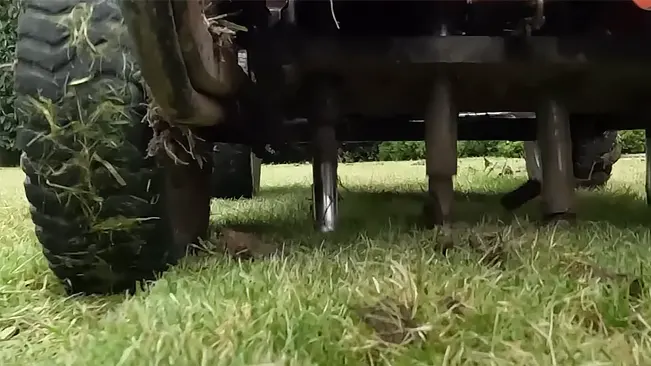
Think of it as unclogging a blocked straw, allowing your lawn to drink up and flourish. Aeration is a simple yet transformative step that can bring back the bounce and lushness to your lawn, making it feel alive and vibrant once again.
The Magic of Scarification
Scarification, despite its somewhat intimidating name, is akin to a rejuvenating spa session for your lawn. Picture this: using a thorough combing tool to meticulously sift through the grass, gently removing the layers of dead material, moss, and thatch that have been suffocating the vibrant life beneath. This process is crucial, not just for cosmetic upkeep but for the overall health of your lawn. By clearing away the debris, you’re essentially allowing your lawn to breathe deeply, akin to a person taking a refreshing breath of air after being confined indoors.
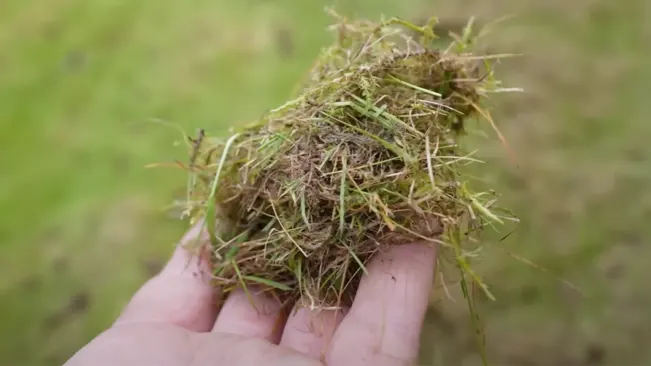
It’s a vital step in lawn care that sets the stage for robust new growth, transforming a struggling turf into a thriving, green expanse. Beyond merely surviving, your lawn begins to thrive, with each blade of grass standing a bit taller, a bit greener, and a lot healthier. Scarification, therefore, is not just about maintenance; it’s about fostering an environment where your lawn can grow to its fullest potential, creating a lush, inviting outdoor space for you and your family to enjoy.
Post-Scarification Care
Once your lawn has undergone the revitalizing process of scarification, it enters a phase where gentle nurturing becomes key. Post-scarification mowing acts as the perfect follow-up, delicately removing any residual debris and presenting a polished, orderly appearance. This step is akin to the meticulous tidying up after a thorough house renovation, where every sweep and cleanup reveals the underlying beauty and promise of the space.
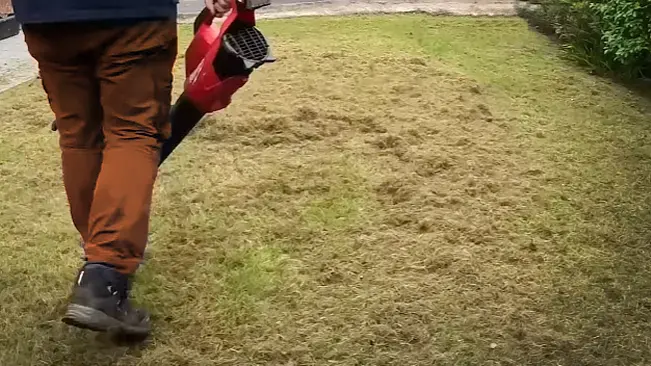
It’s in this moment of clarity, as you gaze upon the freshly groomed expanse of green, that the fruits of your labor begin to manifest. The once cluttered and choked lawn now breathes with potential, poised to burst into a vibrant display of health and vigor. This pivotal point marks a transition from mere maintenance to the artful cultivation of a living tapestry, promising the unfolding of a verdant, flourishing oasis that mirrors the dedication and love poured into every thoughtful act of care.
Soil and Seeding: Laying the Foundation
Selecting the right foundation for your lawn is akin to laying the groundwork for a sturdy home. Opting for premium, possibly heat-treated topsoil ensures a weed-free start, rich in nutrients essential for growth. When it comes to seeding, the choice isn’t arbitrary; it’s about finding a seed mix that complements your local climate and soil peculiarities.
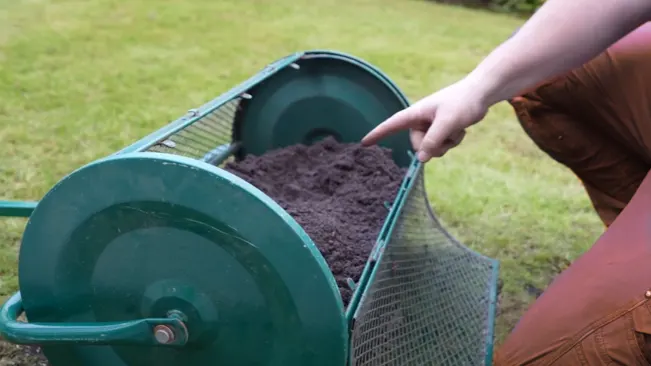
A strategic selection, like combining the durability of Rye with the shade-loving Fescue, can equip your lawn to become a verdant, robust haven. This careful preparation sets the stage for a thriving green expanse, ready to withstand the elements and flourish.
Seeding: Precision and Patience
Seeding your lawn is akin to crafting a masterpiece, where each seed contributes to the larger vision of a verdant oasis. It’s a process that demands patience and precision, as finding the ideal distribution might involve a bit of trial and error. Approach this task with the mindset of an artist, understanding that it’s easier to enhance sparse areas than to correct overcrowding.
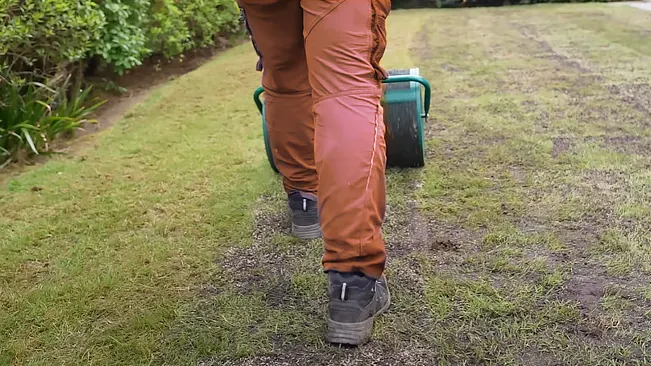
Relish in the creative journey, mindful of the fact that with every seed sown, you’re one step closer to realizing the lush, green haven you’ve envisioned. Each tiny seed holds the promise of growth, embodying your aspirations for a thriving outdoor space.
The Final Touches: Luting and Seaweed Application
As we wrap up the journey of transforming our lawns, it’s those last few steps that really make all the difference. Smoothing out the soil with a lawn lute feels a bit like putting the final swirls on a freshly iced cake. It’s not just about making it look good; it’s about creating the perfect bed for those seeds to sprout and thrive. This final prep work is what turns a good lawn into a great one, setting the stage for that lush greenery we’re all aiming for.
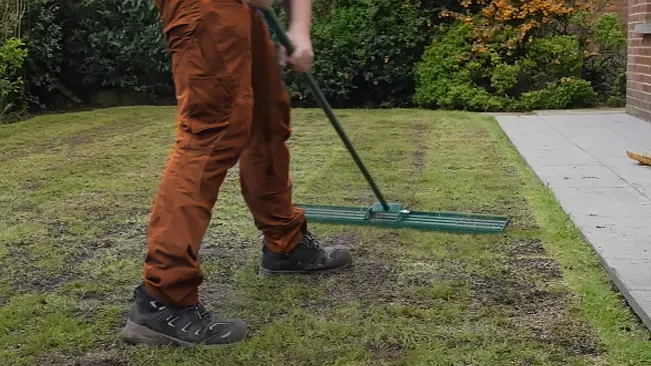
Then there’s the secret sauce: seaweed. It might sound a bit out there, but trust me, this stuff is like a superfood for your lawn. It packs a punch of nutrients without any of the harsh side effects you might get from chemical fertilizers.
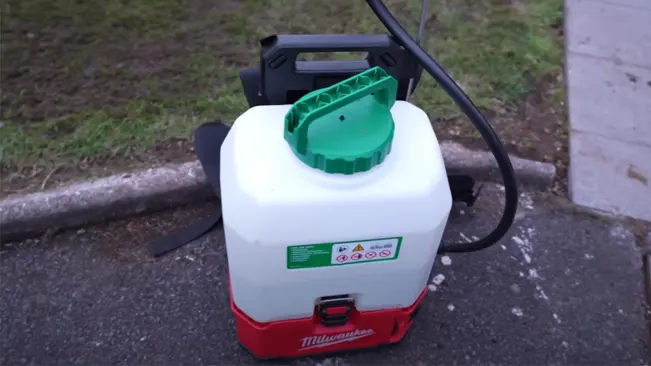
By finishing off with this natural boost, we’re not just growing grass; we’re nurturing a vibrant, living part of our homes. It’s these thoughtful touches that transform a simple patch of green into a flourishing garden, a little piece of nature right outside our door.
Wrapping Up: Your Path to a Thicker Lawn
Jumping into lawn care is more than just a weekend chore; it’s shaping a little oasis in your own yard. It’s not all sweat and toil; with some steady effort and the right tools, that lush lawn you’ve been dreaming of is just around the corner. But here’s the kicker: the real secret to a vibrant, envy-worthy green space is simply keeping at it, nurturing every blade with care. So, as you venture out, keep in mind that each step you take, from sprinkling seeds to the gentle pat of soil, is weaving a greener, more serene retreat right outside your doorstep.
FAQs
- What’s the best way to determine if my lawn needs aeration?
Look for signs of compacted soil, such as water pooling after rain, thin grass areas, or difficulty inserting a screwdriver into the soil. These indicators suggest your lawn could benefit from aeration. - How often should I scarify my lawn?
Scarification should be done annually or biannually, depending on your lawn’s condition and the amount of thatch buildup. Overdoing it can stress the grass, so assess your lawn’s needs each year. - Can I overseed an existing lawn without removing the old grass?
Yes, overseeding is a common practice to thicken up a lawn without starting from scratch. Ensure you mow the existing grass low, aerate, and remove debris before spreading the new seed for better soil contact. - What’s the difference between topsoil and compost, and which one should I use for seeding?
Topsoil is the uppermost layer of soil, providing a medium for plants to grow. Compost is decomposed organic matter that enriches the soil. For seeding, a mix of both provides a good balance of nutrients and a stable base for seeds. - How do I choose the right grass seed mix for my lawn?
Consider your climate, the amount of sunlight your lawn receives, and your soil type. A mix of grass types, like Rye and Fescue, can offer a balance of durability and aesthetics suitable for various conditions. - What is the purpose of using a lawn lute, and can I substitute it with another tool?
A lawn lute smooths soil and integrates seeds into the top layer. If you don’t have a lute, a stiff broom or a rake turned upside down can serve a similar purpose for small areas. - How can I prevent birds from eating the newly sown grass seeds?
Lightly covering the seeded area with straw or using a fine net can deter birds without impeding seed germination. Removing these coverings as soon as the seeds sprout is crucial. - What’s the ideal soil moisture level for germinating grass seeds?
The soil should be consistently moist but not waterlogged. The top 1-2 inches of soil should feel like a wrung-out sponge—damp to the touch but not dripping water. - Is it necessary to remove weeds before seeding, and what’s the best method?
Yes, removing weeds ensures they don’t compete with the new grass for nutrients and space. Hand-pulling, hoeing, or using a non-selective herbicide (followed by waiting the recommended period) are effective methods. - How long should I wait to mow the lawn after seeding?
Wait until the new grass is at least 3 inches tall before the first mow. This allows the roots to establish and prevents pulling up young plants. Set your mower to a higher setting to avoid cutting more than one-third of the grass blade.
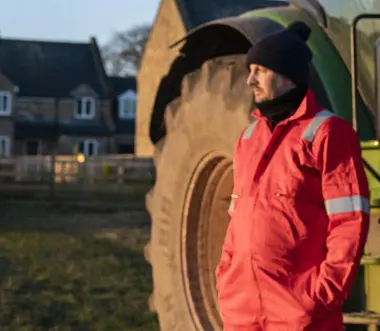
Charles Hayes
Forestry AuthorI'm Charles Hayes, I bring over 15 years of specialized expertise in landscaping and woodworking, blending artistic design with sustainable environmental stewardship. My career, fueled by a profound passion for the natural world, encompasses extensive education and hands-on experience in creating harmonious, eco-friendly outdoor spaces and responsibly managing forest resources. Recognized for my professional standing, I am committed to continuous learning and certification in cutting-edge practices. My expertise is not only reflected in my work but also in my contributions to community projects, educational workshops, and collaborations with industry leaders. As an authoritative voice in my field, I strive to share knowledge and promote environmentally conscious approaches, making me a trusted resource in landscaping and forestry.

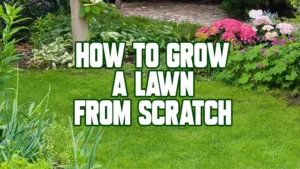
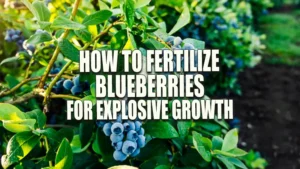


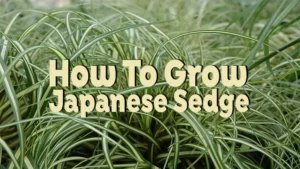
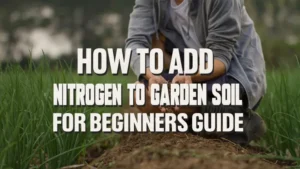
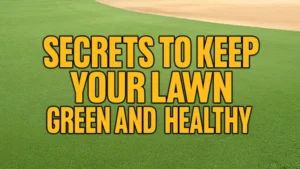


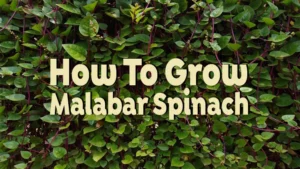


Leave your comment